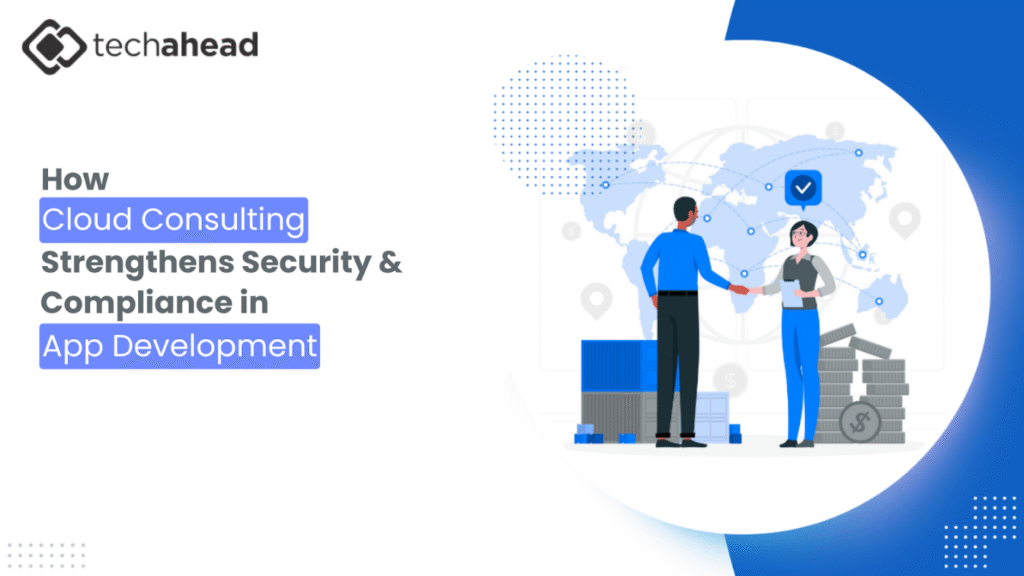
If your application interacts with sensitive data then security and compliance is always part of the work. A deployment team in banking, healthcare, retail or public service will often operate from a clear playbook: GDPR, HIPAA, PCI DSS, etc. These necessary rule books provide clear direction on decisions for architecture, code bases and operations.
In fast release cycles, those guardrails have to be considered from the first planning ticket, not after launch. Encryption, access control, logging, and audit evidence need a place in the backlog next to features.
A cloud consulting company helps teams make those decisions early and keep them consistent across environments. The work ranges from picking identity models and network boundaries to writing clear standards for storage, keys, and secrets.
Why Outside Guidance Matters
Cloud platforms offer depth and flexibility, and that breadth creates room for missteps. An open bucket, a broad IAM role, or an untracked API is enough to expose data. Independent reviewers bring fresh eyes to configs, policies, and code paths. They check assumptions, show safer defaults, and map controls to the exact requirement that each regulator expects.
Where Expert Support Adds the Most Value
Cloud consulting companies bring practical know-how to build a safer, compliant development setup. Instead of asking your team to spend months learning every security rule, consultants share clear guidance, reusable blueprints, and hands-on help so security maturity improves faster.
1) Architecture Reviews and Risk Mapping
Before features ship, reviewers pressure-test the design. They look at how services talk to each other, where data is stored, what each identity can do, and how incidents are contained. Any gaps become specific actions with owners and deadlines.
2) Compliance Ready Infrastructure
SOC 2, PCI DSS & ISO 27001 types of standards call for verifiable evidence. Reusable infrastructure-as-code modules, policies of encryption, backup, and key rotation plans make that evidence simple to produce.
3) Continuous Monitoring and Detection
Security continues after release. Managed log pipelines, SIEM configuration, tuned alerts, and clear playbooks help teams spot issues early and respond in minutes instead of hours.
4) Spending That Matches Risk
Budgets go further when controls match actual exposure. Reviews often find quick wins, such as narrowing roles, enabling managed keys, and blocking public access where it is not needed. These steps remove more risk than buying another product.
Build Security into Delivery
Security works best when it lives inside the delivery process. Many teams still test late & then scramble.
- Let CI run code scans & bring out common flaws before anyone hits merge.
- Scan images and packages so supply-chain surprises do not slip through.
- Add policy checks to infrastructure code and stop unsafe changes at the door.
- Keep a staging based setup that simulates production. Prove fixes under real conditions.
Keep this rhythm. Releases stay quick while the baseline gets safer.
Why Finance Projects Need Extra Care
Money flows invite attackers and auditors alike. A single misconfiguration can trigger fines, chargebacks, and headlines. Payment integrations, KYC, fraud rules, and reporting place extra weight on identity, data handling, and evidence collection.
Partnering in the right places matters here. A fintech app development company brings the payments and privacy context; cloud specialists set safe configs, wire up logging, and prepare response steps. Together, they keep the app fast for users and in line with strict requirements.
Relevant Examples
Scaling Securely
Go live in one market, then queue up two more. Security drafts a multi-zone layout, trims IAM access, and keeps encryption on by default. Policy checks stop unsafe settings before anything goes live. Expansion feels orderly, not improvised.
Simplifying Audits
Audit week used to be spreadsheets and late nights. With policy packs, versioned changes, and a single dashboard, the auditor traces controls quickly and signs off sooner.
Recovery and Continuity
Incidents happen. Backups, tested runbooks, and failover plans keep services available and protect balances and ledgers. Regular recovery drills confirm that the steps work and that data stays consistent.
Picking the Right Partner
Experience with regulated sectors matters. Ask for examples from finance or health, and for the artifacts they deliver after a review. Certifications such as AWS Certified Security – Specialty or CISSP are helpful. Plain explanations are even better. Be sure knowledge transfer includes security and compliance so after improvements are made, the team can continue to maintain them without a long dependency.
Final Say
Cloud guidance has the potential to change the scramble of security and compliance into a more steady routine process. Clear playbooks, reusable templates, and candid reviews keep releases safer and make audits simpler. The wins come from basics done well: tight IAM, encrypted stores, thorough logs, tested backups, and runbooks you can follow under pressure.
For finance products, pairing independent cloud specialists with the right development company brings speed and confidence at the same time. Users move through flows without friction, regulators get the evidence they ask for, and your team ships with fewer surprises.
You see the results in fewer incidents, quicker signoffs for SOC 2 or PCI DSS, and a product that keeps moving without cutting care.